This article was co-authored by Ashley Mak, DPT and by wikiHow staff writer, Janice Tieperman. Ashley Mak is a Physical Therapist and the Owner of Ashley Mak Performance and Rehabilitation, his physical therapy business based in Hoboken, New Jersey. He is also the CEO of Hudson River Fitness and an Adjunct Professor at Kean University. With over seven years of physical therapy experience, Ashley specializes in both pain management and maximizing physical performance. He received his BA in Biology from Villanova University in 2010 and his Doctorate in Physical Therapy (DPT) from Thomas Jefferson University in 2012.
There are 18 references cited in this article, which can be found at the bottom of the page.
wikiHow marks an article as reader-approved once it receives enough positive feedback. This article has 18 testimonials from our readers, earning it our reader-approved status.
This article has been viewed 2,917,738 times.
Do you feel like one of your legs is longer than the other? Misaligned hips (also known as a lateral pelvic tilt) could be the culprit. While it’s always best to get an official diagnosis from your doctor first before trying any treatments, there are a few exercises and stretches that may help realign your hips and offer some relief. We’ll go over everything you need to know, including the major medical causes (and solutions!) for misaligned hips. With a little at-home treatment and a medical professional’s help, you can put your hips back in alignment.
Things You Should Know
- Realign your hips at home with some simple lower body exercises, like the 90/90 hip stretch.
- Note that at-home exercises can help alleviate pain symptoms for certain types of misalignment, but visiting your doctor is still the best path forward.
- Leg length discrepancies (functional and anatomical) and scoliosis are the most common causes of misaligned hips.
- Feel the crests of your hips with your hands to check for any misalignment. Confirm your suspicions with a doctor before officially diagnosing yourself.
Steps
Sample Exercises and Stretches
Expert Q&A
Did you know you can get premium answers for this article?
Unlock premium answers by supporting wikiHow
-
QuestionHow do you maintain perfect posture if your hips hurt?
 Ashley Mak, DPTAshley Mak is a Physical Therapist and the Owner of Ashley Mak Performance and Rehabilitation, his physical therapy business based in Hoboken, New Jersey. He is also the CEO of Hudson River Fitness and an Adjunct Professor at Kean University. With over seven years of physical therapy experience, Ashley specializes in both pain management and maximizing physical performance. He received his BA in Biology from Villanova University in 2010 and his Doctorate in Physical Therapy (DPT) from Thomas Jefferson University in 2012.
Ashley Mak, DPTAshley Mak is a Physical Therapist and the Owner of Ashley Mak Performance and Rehabilitation, his physical therapy business based in Hoboken, New Jersey. He is also the CEO of Hudson River Fitness and an Adjunct Professor at Kean University. With over seven years of physical therapy experience, Ashley specializes in both pain management and maximizing physical performance. He received his BA in Biology from Villanova University in 2010 and his Doctorate in Physical Therapy (DPT) from Thomas Jefferson University in 2012.
Physical Therapist It's a common misconception, but there is no such thing as perfect posture. Research has shown that perfect posture doesn't exist and people can actually experience posture-related pain in what we often refer to as perfect posture. Generally speaking, it's important to just sit comfortably. Add some variety to your day so that you sit in a variety of positions. It's okay to sit by leaning forward a little and flexing your spine. Remember, it's important to just get up and move. If you hold any position for too long, it's going to cause discomfort.
It's a common misconception, but there is no such thing as perfect posture. Research has shown that perfect posture doesn't exist and people can actually experience posture-related pain in what we often refer to as perfect posture. Generally speaking, it's important to just sit comfortably. Add some variety to your day so that you sit in a variety of positions. It's okay to sit by leaning forward a little and flexing your spine. Remember, it's important to just get up and move. If you hold any position for too long, it's going to cause discomfort. -
QuestionDoes hip misalignment cause lower back pain?
 Ashley Mak, DPTAshley Mak is a Physical Therapist and the Owner of Ashley Mak Performance and Rehabilitation, his physical therapy business based in Hoboken, New Jersey. He is also the CEO of Hudson River Fitness and an Adjunct Professor at Kean University. With over seven years of physical therapy experience, Ashley specializes in both pain management and maximizing physical performance. He received his BA in Biology from Villanova University in 2010 and his Doctorate in Physical Therapy (DPT) from Thomas Jefferson University in 2012.
Ashley Mak, DPTAshley Mak is a Physical Therapist and the Owner of Ashley Mak Performance and Rehabilitation, his physical therapy business based in Hoboken, New Jersey. He is also the CEO of Hudson River Fitness and an Adjunct Professor at Kean University. With over seven years of physical therapy experience, Ashley specializes in both pain management and maximizing physical performance. He received his BA in Biology from Villanova University in 2010 and his Doctorate in Physical Therapy (DPT) from Thomas Jefferson University in 2012.
Physical Therapist
-
QuestionCan a hip out of place cause one leg to be shorter than the other?
 Michele DolanMichele Dolan is a BCRPA certified Personal Trainer in British Columbia. She has been a personal trainer and fitness instructor since 2002.
Michele DolanMichele Dolan is a BCRPA certified Personal Trainer in British Columbia. She has been a personal trainer and fitness instructor since 2002.
Certified Fitness Trainer
Warnings
- Always consult a doctor if you have chronic or severe acute pain before attempting to treat a hip problem yourself.⧼thumbs_response⧽
References
- ↑ https://www.youtube.com/watch?v=RK3267U-8nc&t=2m45s
- ↑ https://www.youtube.com/watch?v=RK3267U-8nc&t=3m42s
- ↑ https://www.youtube.com/watch?v=RK3267U-8nc&t=5m12s
- ↑ https://www.youtube.com/watch?v=RK3267U-8nc&t=7m7s
- ↑ https://www.youtube.com/watch?v=RK3267U-8nc&t=7m38s
- ↑ https://health.clevelandclinic.org/90-90-stretch/
- ↑ https://content.iospress.com/articles/work/wor203248
- ↑ https://www.sciencedirect.com/topics/nursing-and-health-professions/lateral-pelvic-tilt
- ↑ https://www.youtube.com/watch?v=RK3267U-8nc&t=180s
- ↑ https://www.columbiaortho.org/patient-care/specialties/pediatric-orthopedics/conditions-treatments/leg-length-discrepancy
- ↑ https://www.mayoclinic.org/diseases-conditions/scoliosis/symptoms-causes/syc-20350716
- ↑ https://www.mayoclinic.org/diseases-conditions/scoliosis/diagnosis-treatment/drc-20350721
- ↑ https://my.clevelandclinic.org/health/diseases/15837-adult-scoliosis#management-and-treatment
- ↑ https://www.columbiaortho.org/patient-care/specialties/pediatric-orthopedics/conditions-treatments/leg-length-discrepancy
- ↑ https://www.sciencedirect.com/topics/nursing-and-health-professions/lateral-pelvic-tilt
- ↑ https://somaticmovementcenter.com/leg-length-discrepancy/
- ↑ https://my.clevelandclinic.org/health/diseases/15837-adult-scoliosis
- ↑ https://www.columbiaortho.org/patient-care/specialties/pediatric-orthopedics/conditions-treatments/leg-length-discrepancy
- ↑ https://www.limblength.org/conditions/limb-length-discrepancy-lld/
- ↑ https://www.sciencedirect.com/topics/nursing-and-health-professions/lateral-pelvic-tilt
- ↑ https://www.youtube.com/watch?v=RK3267U-8nc&t=3m0s
- ↑ https://www.nhs.uk/live-well/exercise/strength-and-flexibility-exercises/common-posture-mistakes-and-fixes/
About This Article
Before doing any self treatments, check with a physician to make sure the problem is actually hip misalignment. If it is, try to remove daily sources of stress like poor posture or heavy bags that could have caused or worsened the issue. To strengthen the muscles around your hips, try performing pelvic tilts, prone hip extensions, and side-lying hip abductions. If you want to release built up tension, go with iliotibial band, seat side saddle, and knee to chest stretches instead. For tips from our Medical reviewer on seeking further professional help, read on!


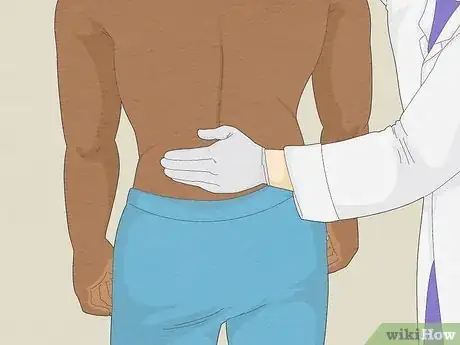
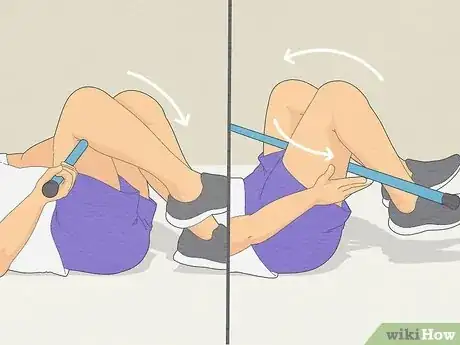
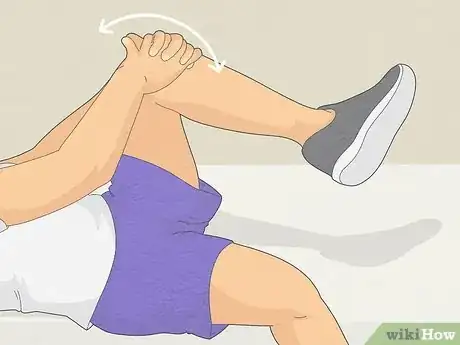
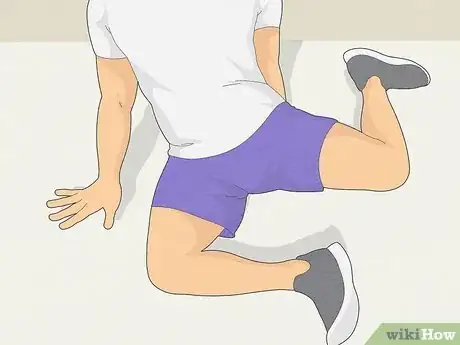
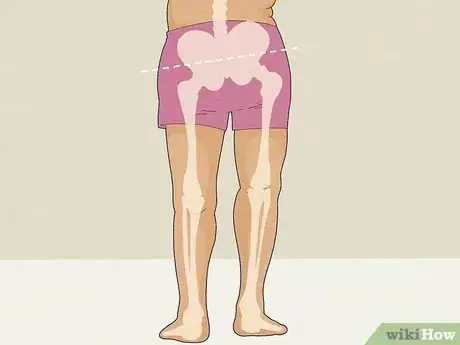
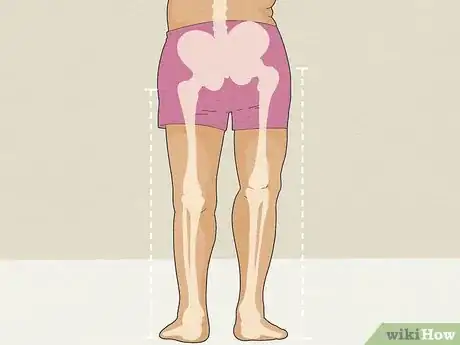
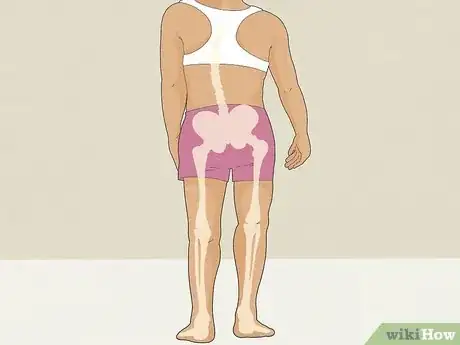

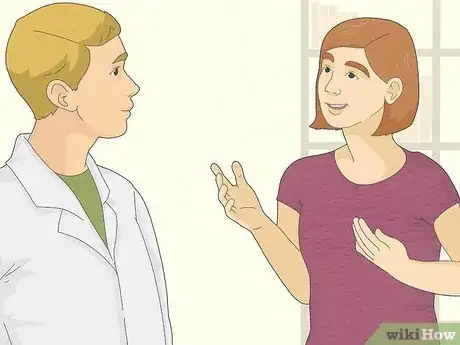
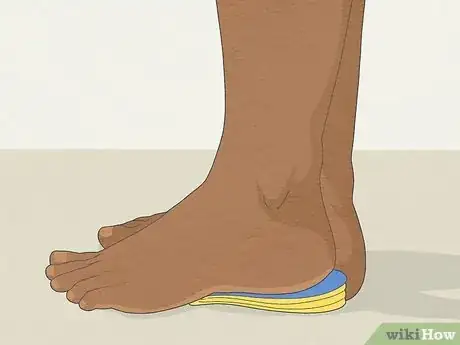
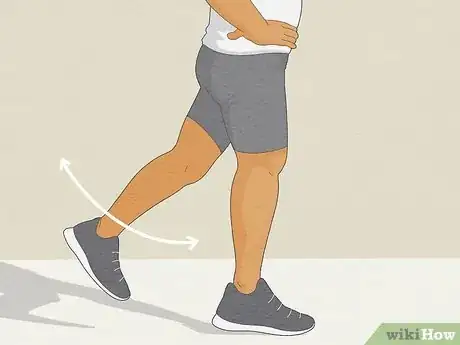
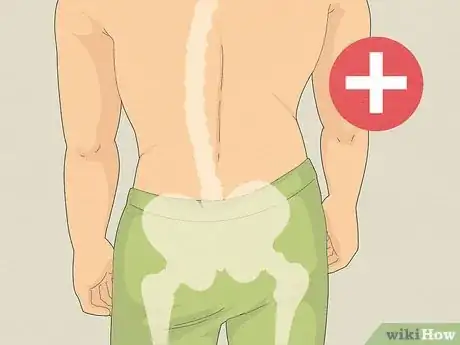
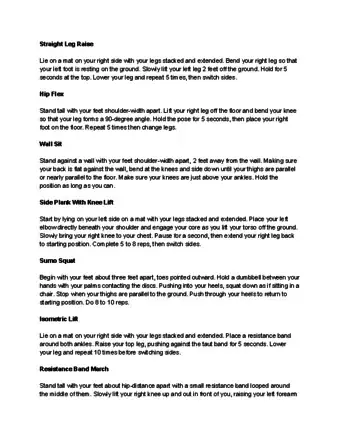
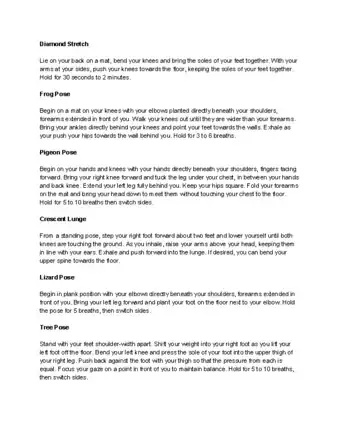


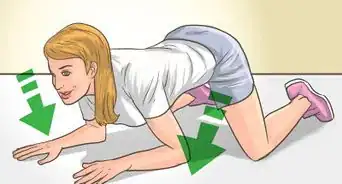
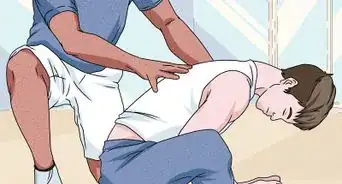
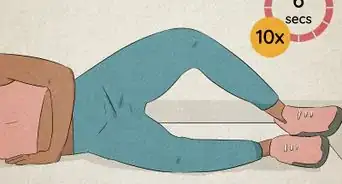

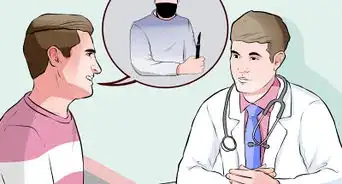











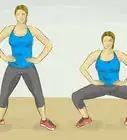
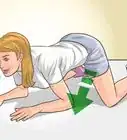





































Medical Disclaimer
The content of this article is not intended to be a substitute for professional medical advice, examination, diagnosis, or treatment. You should always contact your doctor or other qualified healthcare professional before starting, changing, or stopping any kind of health treatment.
Read More...